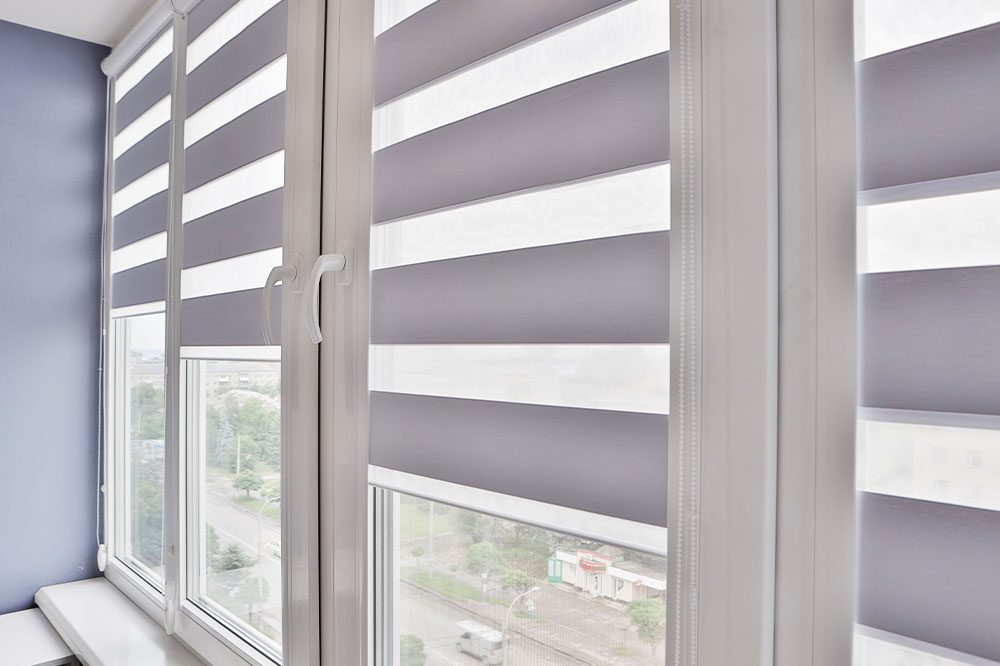
An introductory guide to window blinds and shutters
Blinds and shutters are a great alternative to curtains, as they add light control, privacy, and style to your windows. Compared to regular curtains, they provide more structure to your home and give you better control over light penetration into the room. To find the best option for your windows, it is important to learn about the subtle differences in the material and functioning of blinds and shutters. Here is a breakdown:
Blinds
Blinds are generally hard window coverings with rows of horizontal slats you can open and close to control light. They are generally long-lasting and easy to maintain, as any dust can be cleaned using a rag. More durable variants of window blinds can impart a luxurious feel to your home but can be quite expensive. On the other hand, cheaper options are more likely to bend or break, needing constant replacement. Some popular types of blinds are:
Wood blinds: Made from wood, these blinds can help add a warm, inviting feel to any room. However, they are considerably more expensive than other materials and can be susceptible to damage due to moisture. It is best to install them in dry areas like living rooms, bedrooms, and home offices.
Faux wood blinds: Faux wood blinds offer the same aesthetic appeal as wooden blinds but reduce the risk of moisture damage. Generally made from vinyl, these blinds are suitable for bathrooms, kitchens, and laundry rooms.
Aluminum blinds: Aluminum blinds are cheaper and require less maintenance than wood and faux wood blinds. They may be a little noisy when the slats bang against each other, but they are popular because of their affordability.
Vertical blinds: Unlike generic horizontal blinds, these hang vertically from the head rail or track and are ideal for homes with larger windows, sliding doors, and passageways.
Shutters
Shutters are rigid door-like covers that can be shut over a window. They can be customized with blinds as well. Shutters protect the windows and allow privacy while still ensuring air and light flow. This is an ideal aesthetic choice for those with upscale old-world homes. However, as they must be custom-built and installed, they can be considerably more expensive than regular blinds or shades.
Plantation shutters: These are small wooden doors that swing open and shut to provide control over light and airflow. They have horizontal slats on them (like blinds) and are often used only on the lower half of a window.
Exterior shutters: These shutters are commonly found in old homes. Exterior shutters may be placed on either side of the window on exterior walls and are ideal for shielding your home against external factors.
How much do blinds and shutters cost?
The cost of window blinds and shutters depends on the window sizes, materials, labor, and supplies required. Blinds can cost anywhere from a few dollars per window to $200 for wooden blinds on a moderately sized window. The cost for plantation shutters generally ranges from $200 to $350 or more per window, depending on the materials used. While you can install blinds yourself, plantation shutters may require professional assistance, which may cost anywhere between $200 and $1200.
Where can you get blinds and shutters?
Popular brands that sell window blinds and shutters around the country are The Shade Store, Blinds.com, Blindster, Levolor, Graywind Blinds, Select Blinds, The Shutter Store, American Blinds, Norman Window Fashions, and West Elm.




